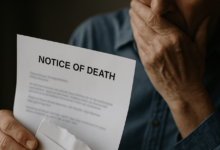Expanding NP Authority, The ICAN Act to Remove Barriers

What is the Improving Care and Access to Nurses (ICAN) Act?
The ICAN Act, a bill now in Congress, supports nurse practitioners (NPs) to practice to the full extent of their training and capacity, removing federal-level barriers related to limitations on Medicare and Medicaid (M&M) reimbursements and strengthening access to care for M&M beneficiaries.
Although NPs have been authorized to receive reimbursement from Medicare since 1997, this bill makes healthcare news by allowing NPs to provide further services under Medicare and Medicaid, including the following:
- Prescribe and supervise cardiac and pulmonary rehabilitation,
- Certify diabetic patients for coverage of therapeutic shoes,
- Ascertain that the NPs’ patients are properly accounted for in the Medicare Shared Savings Program, which aims to improve healthcare quality and reduce costs,
- Refer patients for specialized medical nutrition therapy,
- Certify and recertify a patient’s terminal illness, making them eligible for hospice care,
- Order and interpret diagnostic tests,
- Approve the need for inpatient hospital services.
Does the ICAN Act Supersede State Regulation of NP Scope of Practice?
No, it does not, but it clears federal barriers. Each state regulates NP scope of practice, and the regulation falls into three categories: full practice, reduced practice, and restricted practice.
- Full practice authority (FPA) allows NPs to operate their own practices, evaluate patients, design and manage treatment plans, and prescribe medication, tests, and diagnostics—all without physician oversight.
- Reduced practice blocks NPs from establishing independent practice but authorizes them to work independently within a practice established by a physician.
- Restricted practice requires NPs to work under the supervision of a physician for the entire scope of practice.
As of March 2023, there are 27 states that have approved full-practice authority where nurse practitioners can open their own practice and independently apply their full professional scope.
The movement now is to gain approval of FPA in all states, empowered by the ICAN Act, allowing NP patients to benefit from Medicare and Medicaid.
Read More About Nurse Practitioner Practice Authority Here
How Did We Get to this Patchwork of NP Authorization?
The legislation of M&M in 1965 increased the demand for primary care services, and therefore the need and development of the NP role also grew in response to that demand. The first formal NP educational program began in 1965 in Colorado, and in 1971, Idaho was the first state to recognize the NP title. Full practice authorization for NPs started 23 years later, in 1994.
Timeline of NP Full Practice Authorization
- 1994 – The first five states granted FPA for NPs, namely Alaska, Iowa, Montana, New Mexico, and Oregon.
- 1997 – The Budget Reconciliation Act allowed for certain reimbursement of NP services by Medicare.
- 2000 – Ten states plus DC had FPA approval.
- 2006 – All fifty states granted prescriptive authority.
- 2019 – The COVID‐19 pandemic ushered in a new era for NPs, as emergency regulations stretched their scope of practice and urgently called on the full extent of their education and training.
- 2023 – Twenty-seven states plus DC have FPA for NPs. These states are Alaska, Arizona, Colorado, Connecticut, Delaware, Hawaii, Idaho, Iowa, Kansas, Maine, Maryland, Massachusetts, Minnesota, Montana, Nebraska, Nevada, New Hampshire, New Mexico, New York, North Dakota, Oregon, Rhode Island, South Dakota, Utah, Washington, plus Washington D.C.
Hurrah for the twenty-seven states! And more are on their way. It seems to be an unstoppable movement, but it still requires champions and hard work, and the ICAN Act is a large step forward for NPs.
What is a Nurse Practitioner vs. a Doctor?
While NPs in a growing number of states have full practice authority and may prescribe, diagnose and treat patients, very similar to the role of a medical doctor, some M&M limitations are still in place.
On the other hand, one major difference is in the education and training requirements. Doctors may take eleven to fifteen years of their lives to complete an undergraduate program, attend medical school, and complete three to seven additional years of residency training to, in the end, practice medicine as a licensed physician.
NPs take about six to seven years to complete an undergraduate nursing program and then earn an MSN, including at least 500 hours of practicum.
That’s about twice as long to become a doctor in comparison to becoming an NP.
Read What Is a Nurse Practitioner?
Why Are NPs Optimum for Primary Care?
Nursing specializations often encompass a wider range of areas compared to many physician specialties, equipping nurse practitioners with valuable skills and knowledge to deliver primary care. NPs both care and cure, providing a holistic perspective on health and bringing together health promotion, education, and disease prevention.
While some doctors go into general practice, many become highly specialized. For example, cardiovascular surgeons only perform surgery on the heart, and gastroenterologists focus only on the digestive system.
According to the American Association of Nurse Practitioners, almost 70% of NPs specialize in Family Care which is within primary care, and 88.9% in some areas of primary care. Nonetheless, there are many other specialties for NPs, such as acute care, pediatrics, neonatal, women’s health, or psychiatric-mental health.
Shortage of Primary Care Clinicians
According to the Association of American Medical Colleges, by 2033, the U.S. will face a shortage of up to 55,000 primary care physicians, concentrated in rural and underserved areas. The growing demand for high-quality primary care providers stands in need of NPs, who are ideally prepared to meet this demand, but state regulation of NP scope of practice has delayed this as a valid solution due to concerns regarding patient safety and quality of care.
However, studies show that NPs deliver patient outcomes and safety comparable to physicians. In fact, NPs positively impact patient education and satisfaction and are more likely to provide recommended health education services and counseling to stop smoking. Additionally, NPs consistently offer cost‐effective care, with a 29% lower cost compared with primary care physicians.
Primary Care for 31 Million More People
According to a UnitedHealth Group report, if all states allowed NPs to practice at the top of their capacity, about 31 million more people living in primary care shortage areas would have access to the care they need to stay healthy. Over 200 national, state, and local nursing organizations, plus the American Health Care Association, American Public Health Association, National Rural Health Association, and other healthcare organizations, endorse the ICAN Act.







